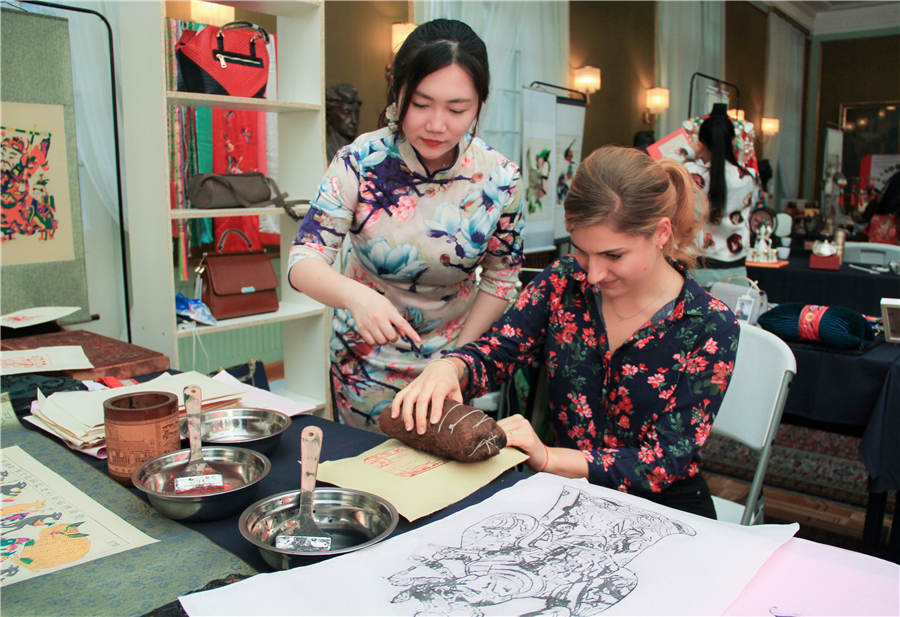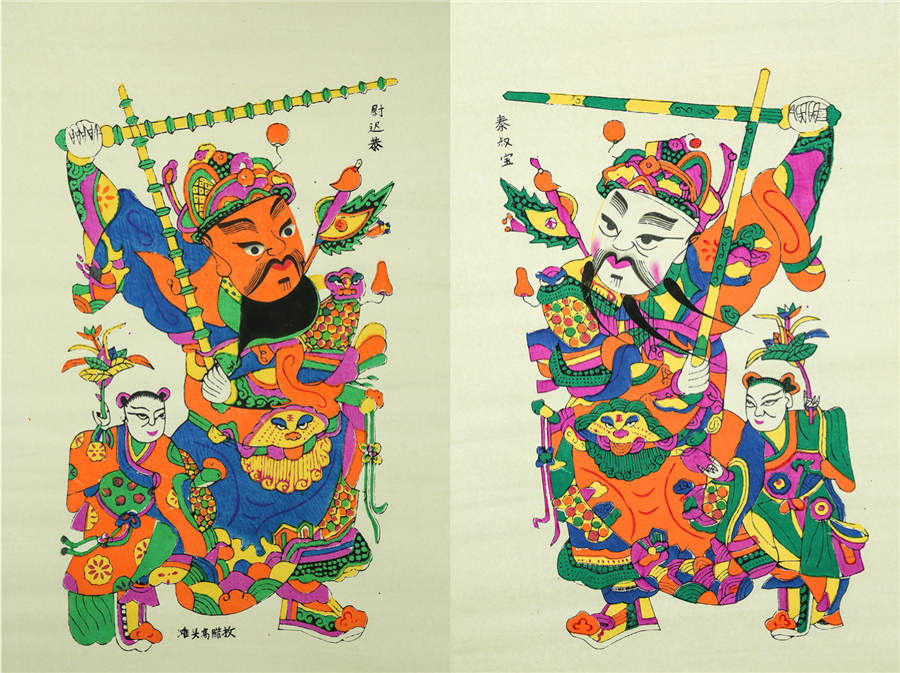
From the People's Daily App.
This is Story in the Story.
Nianhua or “Chinese New Year pictures” are chromatic woodblock prints that boast a long history dating back to the Western Han Dynasty (206 BC-AD 24).
The craft was born on Taohuawu street in Suzhou, Jiangsu Province.
It involves a craftsman drawing a sketch on a piece of paper before carving it on to a set of boards and painting it. The print is complete once the boards are pressed onto a piece of paper or other surfaces.
The art, which dates back more than 350 years, was added to China's intangible cultural heritage list in 2006.
A nianhua revival is underway, fueled by young designers, who are making immense contributions. They have teamed up with artisans to create the so-called Neo-nianhua works and spinoffs, such as mousepads, scarves, T-shirts, pillows, bags, stickers, calendars, and smartphone cases.
At a recent conference themed, New Nianhua, New Life, the two-day event drew at least 300 officials, artisans, designers, researchers, and marketing and sales specialists from across China.
At a recent nianhua conference, a year-long campaign was unveiled, supported by the Ministry of Culture and Tourism, to raise public awareness of cultural heritage in 2020 by publicizing master craftsmen, holding workshops, art fairs, and mounting exhibition tours around the nation.
According to one local heritage protection office, half of the inheritors of the intangible cultural heritage are older than 65.
Today’s Story in the Story looks at how nianhua is undergoing a revival as younger generations are being exposed to the ancient art form.

Nianhua artisan Zhong Xinglin introduces the traditional Chinese cultural heritage to a young woman during her visit to Warsaw in the summer of 2018. (Photo: China Daily)
Zhong Xinglin made a hard decision in early 2017— to quit working as a local news correspondent for the web edition of the People's Daily in Central China's Hunan province.
Zhong's family has been engaged in the nianhua-making business for more than a century.
However, "as Chinese society evolves at breakneck speed, nianhua, a typical token of a traditional way of life, is losing ground in contemporary life. Now it's my turn to keep the old art and craft thriving in the 21st century," Zhong told the audience at the opening ceremony of a conference on Chinese New Year pictures' inheritance and development, held in Weifang, East China's Shandong Province.
Both traditional products and modern spinoffs from the Zhong family's nianhua studio have been selling like hot cakes on social media, such as WeChat and TikTok.
"A steadily-growing number of followers are not only willing to buy Tantou nianhua products but also to learn nianhua-making skills. For me, that is very encouraging," said Zhong. "I am very optimistic about the future of nianhua."
Tai Liping, a veteran nianhua artisan from Baoji, Northwest China's Shaanxi Province, echoed Zhong's optimism.
"I firmly believe that nianhua will enjoy a rebirth, gaining a foothold in contemporary life," said the 68-year-old master, a national-level nianhua inheritor, better known as a guardian of Fengxiang nianhua, a local variety of the Chinese New Year woodblock prints in Shaanxi.

A pair of door gods, typical of the traditional Tantou nianhua style, is a highly-respected cultural heritage in Tantou township, Longhui county, Central China's Hunan province. (Photo: China Daily)
Tai's family has been practicing the folk art since the early Ming Dynasty (1368-1644). As the only surviving 20th-generation inheritor of the art and craft, Tai has spent decades re-creating hundreds of traditional nianhua woodblocks, strictly following the vintage New Year prints he found.
"Inheritance comes before innovation. It is my mission in life to rescue and recover traditional motifs, patterns, and techniques. I am not interested in innovation. I'd rather leave it to young people," Tai said.
But Tai is happy to see that his son Tai Gaoyang, daughter-in-law Wang Yixuan, and daughter Tai Gaodi, have all joined in to promote nianhua.
Gaoyang and Yixuan concentrate on creating new products based on traditional nianhua motifs, and then market and sell them through e-commerce and social media platforms.
Meanwhile, Tai Gaodi, a nianhua researcher with the Chinese National Academy of Arts, is busying herself building up the nation's most inclusive nianhua database for academic and educational use.
"These novel products are usually characterized by common scenes from daily life, and they have easily become an integral part of contemporary life,” said Wang.
People of different ages and from different areas are making joint efforts to revive nianhua. "Most importantly, more and more young people are engaging themselves in the creation and promotion of nianhua and as such, have injected new life into the millennium-old folk art," said Chang Huixue, managing director of wodsy.com.
(Produced by Nancy Yan Xu, Lance Crayon, Brian Lowe and Paris Yelu Xu. Music by: bensound.com. Text from China Daily.)


